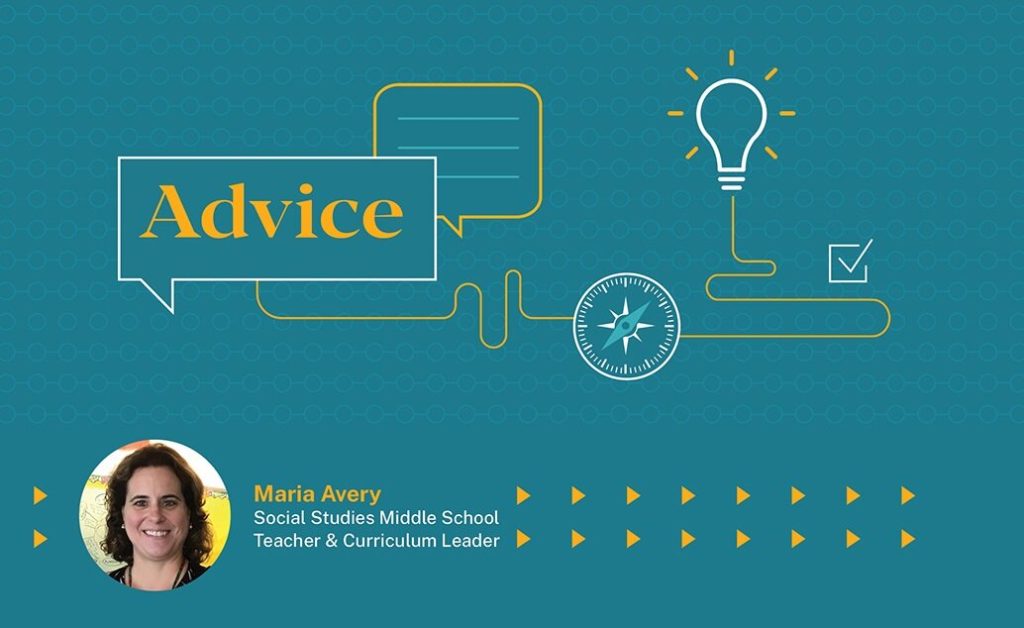
Maria Avery, a middle school social studies educator and curriculum leader in Prospect, Connecticut, earned her M.Ed. in Instructional Design and Technology from American College of Education in 2017. In the last few months, she’s put it to use designing engaging, accessible lessons during the coronavirus pandemic. She shares some tools and strategies for creating curriculum that works both in the classroom and at home.
ACE: As a student – and now graduate – of ACE’S M.Ed. in Instructional Design and Technology program, what are some tools and strategies you learned to keep students engaged online?
Maria Avery: I’ve always enjoyed using technology in my classroom, so my teaching is already a little like blended learning. ACE gave me the confidence and toolkit I needed to make the transition to online learning quickly and confidently. Right away, I knew what I needed to do.
The first two words I learned at ACE were “synchronous” and “asynchronous.” It was kind of funny to see them suddenly in everyone’s vocabulary. A lot of [my colleagues] started off with everything being synchronous, but I was able to show them that you can design effective online learning with a combination of asynchronous and synchronous learning tools and strategies.
That’s what I do with my lessons. I use Screencast-O-Matic to introduce my lessons and make connections to prior learning and lesson goals. I also use a lot of multimedia materials. We use Schoology as a learning platform and Google Suite to give students access to text, videos and graphics.
To keep students engaged, I found I needed to do a lot of formative assessments, weekly collaboration and discussion forums. I use tools like Flipgrid, Padlet and embedded Schoology discussion posts. I always made sure to give timely feedback. As I used these strategies, I was also moving through a very well-designed ACE program, so I was able to learn by example.
Finally, I do provide some synchronous opportunities. I do occasional Google Meets to touch base with students and answer their questions. I use GoGuardian to chat with them and monitor what they were doing. Plus, the kids can communicate with me through Schoology chat. I give them real-time support while allowing them to work at their own pace.
ACE: How do you think this pandemic experience will impact your teaching strategy in the long term?
MA: This has taught me that we all need to continue building our skills to better engage in distant learning environments. We’ve learned that we can do a lot more from a distance than we thought we could. I want to continue refreshing my skills in online instruction, not only to become a better instructional designer, but to get my kids more comfortable with online learning. Even though they already had access to a lot of online tools, they had to become a lot more familiar with them this spring.
ACE: As the 6-8 grade curriculum leader at your school, other teachers look to you for guidance on effective curriculum design. What are some strategies for designing flexible curriculum that’s effective both online and offline?
MA: At ACE, I learned about Universal Design for Learning. It’s an excellent framework to help design curriculum that works both in brick-and-mortar classrooms and in blended or online environments. Whether you’re teaching in a classroom or online, you should always make sure your kids understand the why of the learning.
Lessons should also be accessible for different learners. Give them varying opportunities to make sense of the lesson, whether it’s through text-to-speech, speech-to-text or closed-captioning. Give them opportunities to vary their responses as well. I’ve had discussion forums where kids can submit a written response, visual response, video or audio. There are plenty of tools to express the how of learning: graphic organizers, checklists and peer feedback are all useful.
ACE: Teaching online forces you to shake up your routine and reconsider what “works.” What are some common roadblocks for teachers transitioning to online learning? Do you have any tips to get past those roadblocks?
MA: My colleagues were most frustrated about how long it often took to hear anything from their students. In the classroom, you’re walking around and checking in to see how they’re progressing. What does that look like online? I helped several of my colleagues create discussion forums so they could facilitate learning in real time.
It’s important to remember, though, that not all learning has to be in real time. If I want to do something in real time and pull them off in small groups, that can certainly work, but you can also teach effectively in an asynchronous environment. A lot of students really like that; they like the flexibility and opportunity to work at their own pace.
ACE: Your students and fellow educators alike will look to you to take the lead as we continue navigating through uncertainty. How do you plan to move forward with confidence when everything is up in the air?
MA: I can’t control the virus and I can’t control what my students do. I can’t bring them to the computer at home. But once my students open their computers, I feel very confident I can give them engaging, meaningful, challenging experiences, no matter where they are. That’s the confidence I have: “It’s going to be okay. We can do this.”

